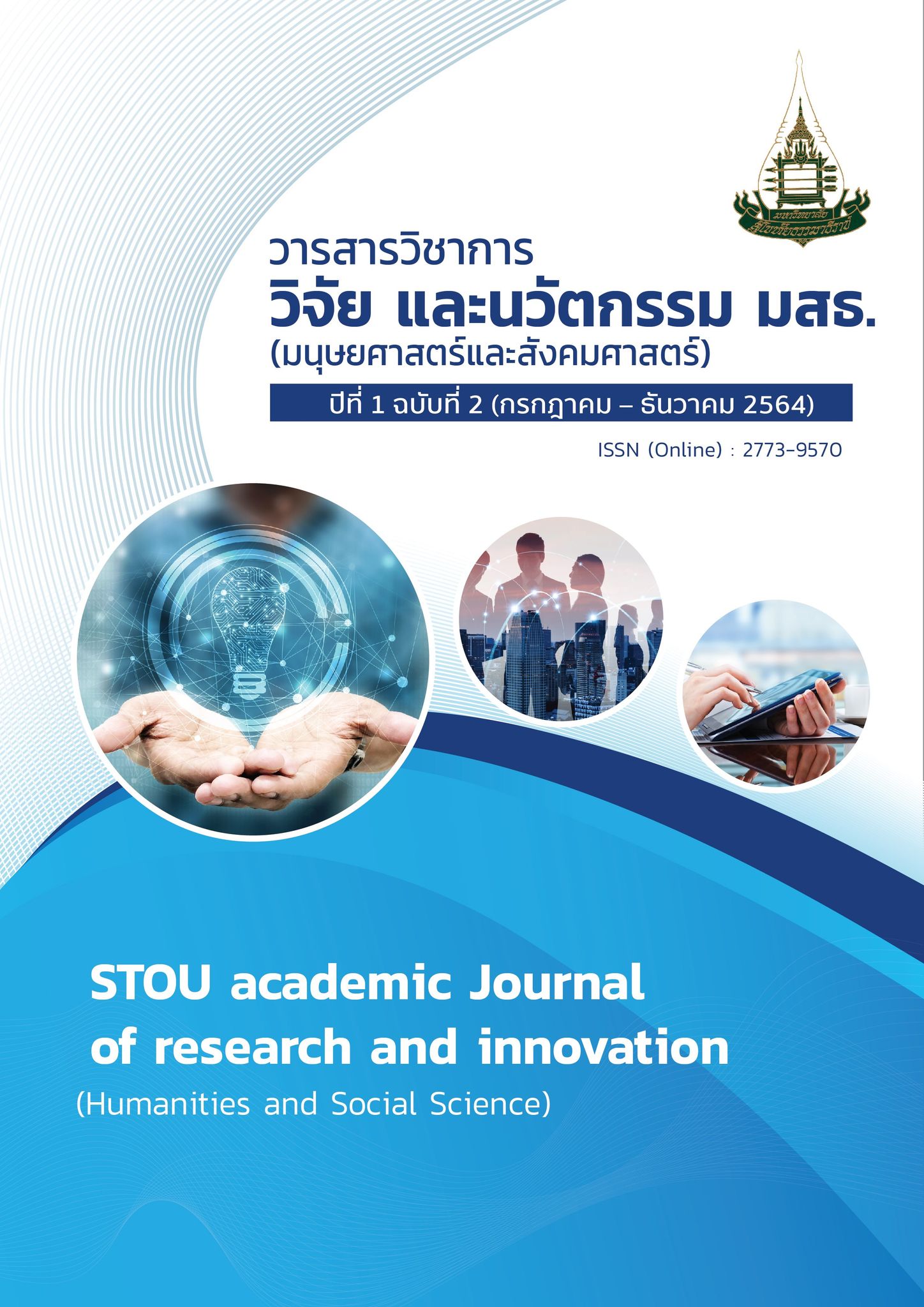Break through the crisis of faith by Crisis communication
Keywords:
Crisis of Faith, Crisis Management, Crisis CommunicationAbstract
Thailand in an era of high conflict of opinions combined with the emergence of social media in the world of communication resulted in existing many different polarities of opinion. In addition, the crisis that is changing the world, The COVID-19 outbreak, has resulted in a crisis of faith caused by 1. Unsystematic management or known as managerial weakness. 2. The crisis solving goal is not acheived 3. Time spent managing a crisis or problem is not timely. 4. Inefficient crisis communication . Based on the aforementioned causes, this article reviews the factors that contribute to ineffective crisis communication in Thailand that can not help mitigate crises and present a 10-step approach to overcome the crisis of faith. Crisis can be divided into 3 periods, namely, when there is a crisis, during a crisis and after a crisis. Begin with the establishment of a communication team in a crisis to analyze the situation from the occurence until the solution of the crisis is over. After that messenger designation ,determining the communication interval, receiver analysis, preparation the content to communicate in each period, including a form of communication and evaluation the efficiency and effectiveness of post-crisis communication will be done respectively. Information will be used in the preparation of the organization's crisis communication planning manual for managing the crisis.
References
คำสั่งศูนย์บริหารสถานการณ์การแพร่ระบาดของโรคติดเชื้อไวรัสโคโรนา 2019 (โควิด-19). (2564, 31 มีนาคม). แนวปฏิบัติตามข้อกำหนดออกตามความในมาตรา 9 แห่งพระราชกำหนดการบริหารราชการในสถานการณ์ฉุกเฉิน พ.ศ. 2548 (ฉบับที่ 9). ราชกิจจานุเบกษา. เล่ม 138.
ชลทิพย์ พูนศิริวงศ์ และรุ่งนภา พิตรปรีชา. (2556). การสื่อสารประชาสัมพันธ์และกลยุทธ์ในการสื่อสารของรัฐบาลในภาวะวิกฤตอุทกภัย ปี 2554. Journal of Public Relations and Advertising, 6(1), 45-46.
ไทยวินเนอร์. (2563). Crisis management คืออะไร. สืบค้นเมื่อ 11 พฤษภาคม 2564 จากhttps://thaiwinner.com/crisis-management/
บัณฑิต นิจถาวร. สืบค้นเมื่อ 1 พฤษภาคม 2564 จาก https://www.bangkokbiznews.com/ blog/detail/ 651729.
เปลื้อง ณ นคร. สืบค้น 1 พฤษภาคม 2564 จาก https://dictionary.sanook.com/search/dict-th-th-pleang/ char/%E0%B8%AD/2
พจนานุกรมฉบับราชบัณฑิตยสถาน. (2554). สืบค้นเมื่อ 1 พฤษภาคม 2564 จาก https://dictionary.orst.go.th/
วิทยาธร ท่อแก้ว. (2563). แนวทางการสื่อสารในภาวะวิกฤตสำหรับองค์การปกครองส่วนท้องถิ่น. นนทบุรี: มหาวิทยาลัยสุโขทัยธรรมาธิราช.
สำนักงานกิจการยุติธรรม. (2563). การสื่อสารในภาวะวิกฤต. กระทรวงยุติธรรม.
อัจฉราพร ณ สงขลา. การสื่อสารในภาวะวิกฤติ สิ่งที่องค์กรเมืองไทยมองข้าม. สืบค้นเมื่อ 8 พฤษภาคม 2564 จาก http://www.image pool wise.com/topic_inside.php?article_id=1
Bernstein, J. (2016). The 10 Steps of Crisis Communications. Retrieved May 2, 2021, from http://www. bernsteincrisismanagement. com/the-10-steps of-crisis-communications/
Coombs, W. T. (2019). Ongoing Criss Communication: Planning, Managing, and Responding. (5th Edition). United Kingdom: Sage Publications.





